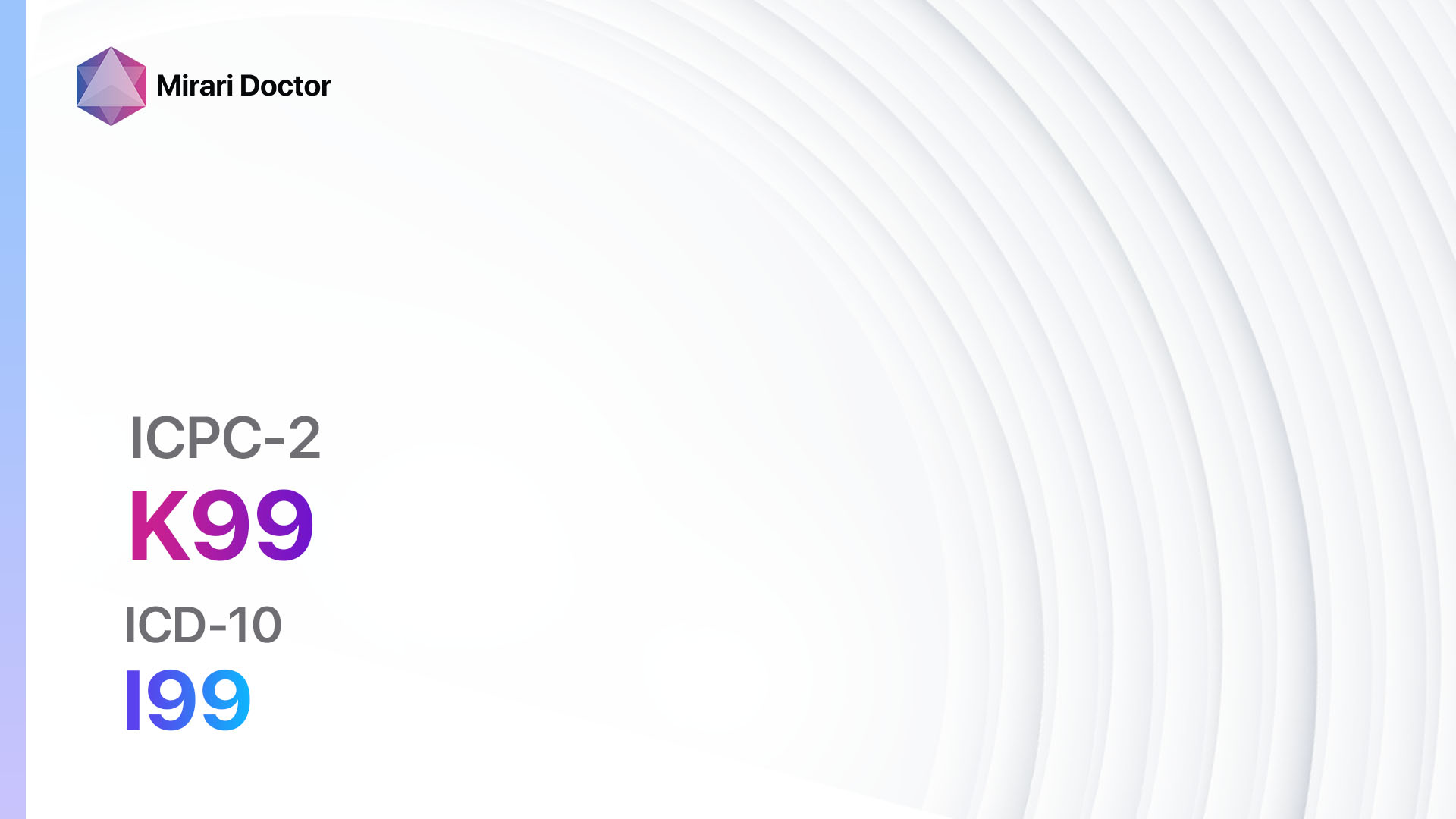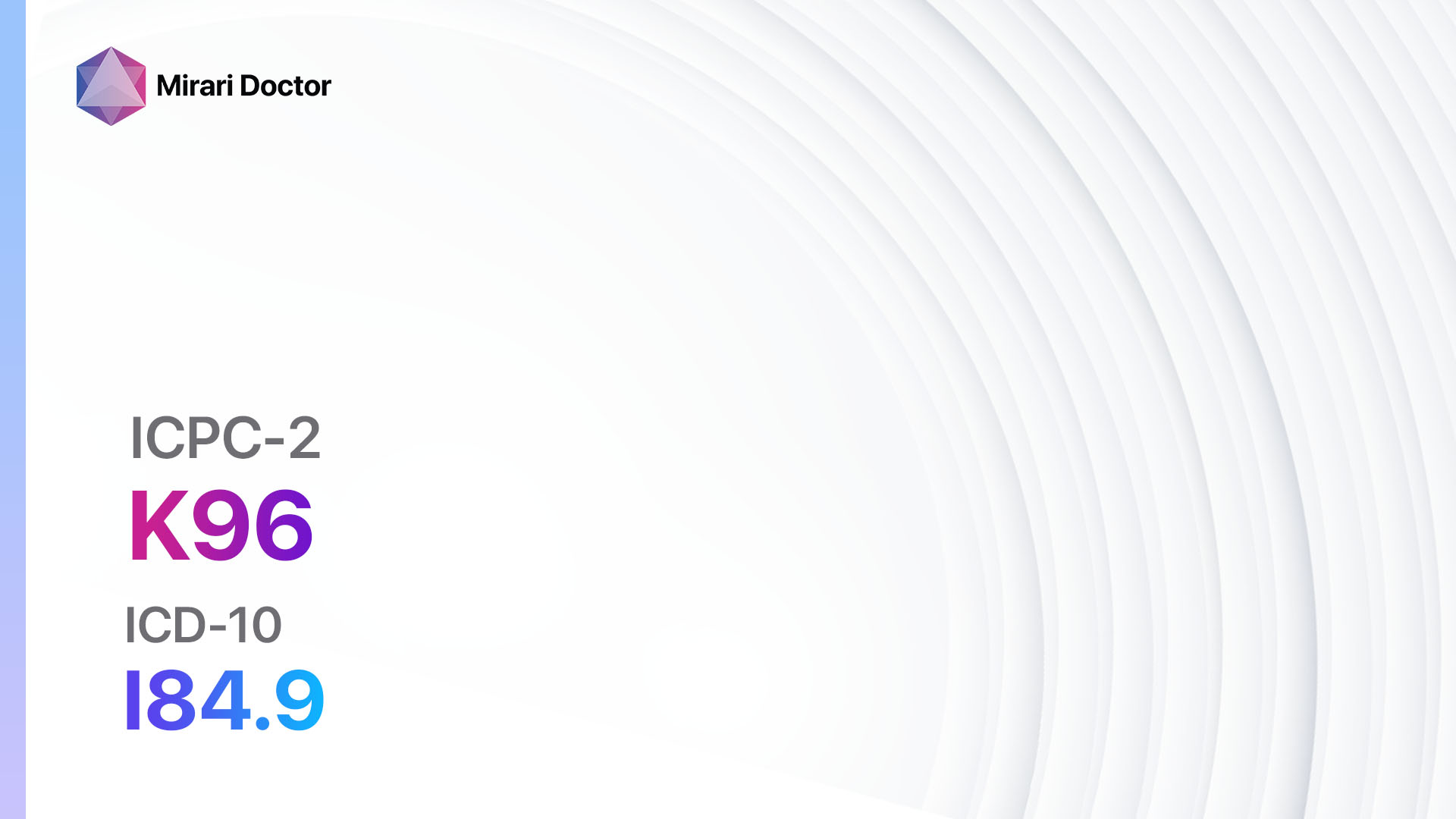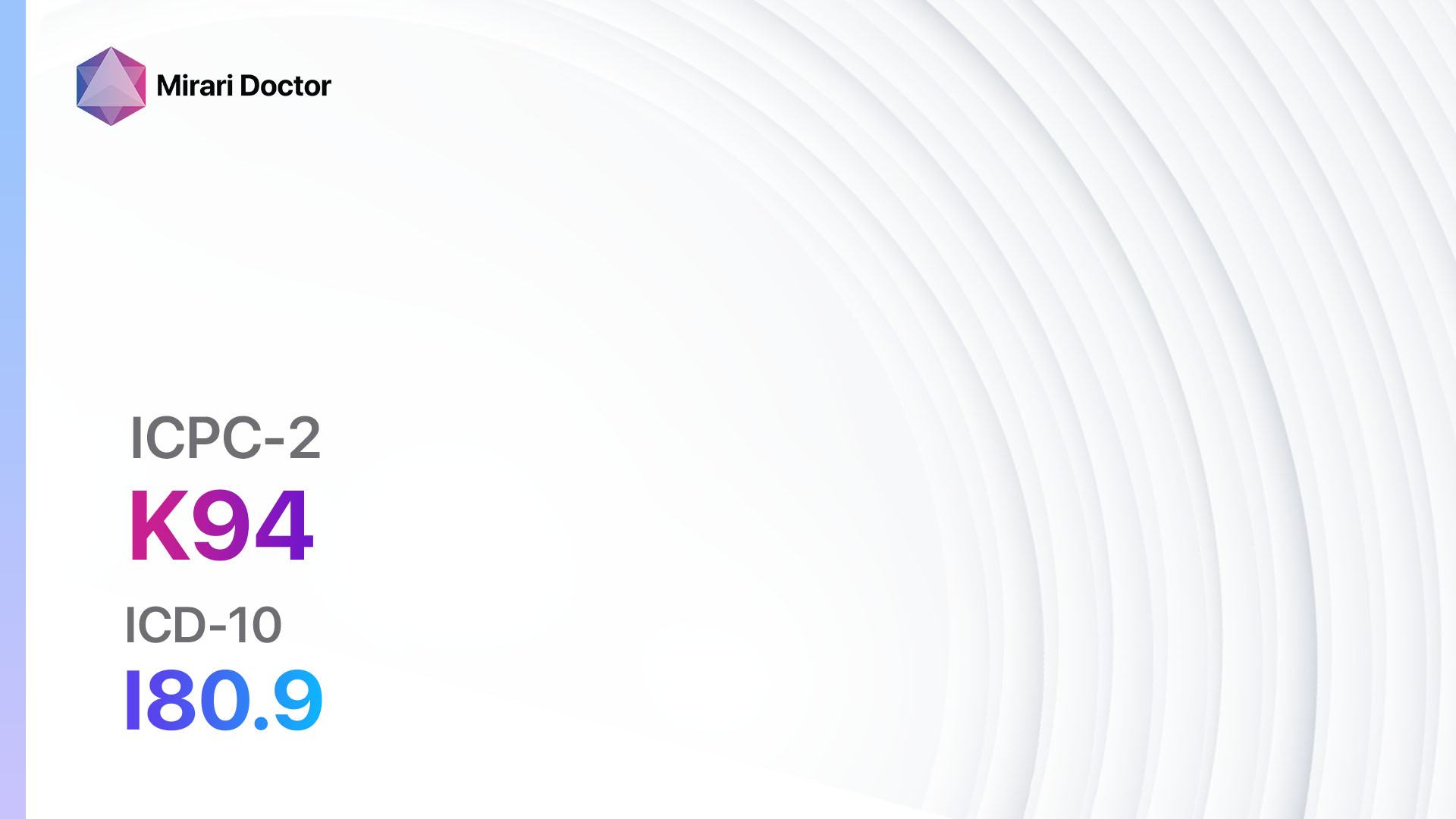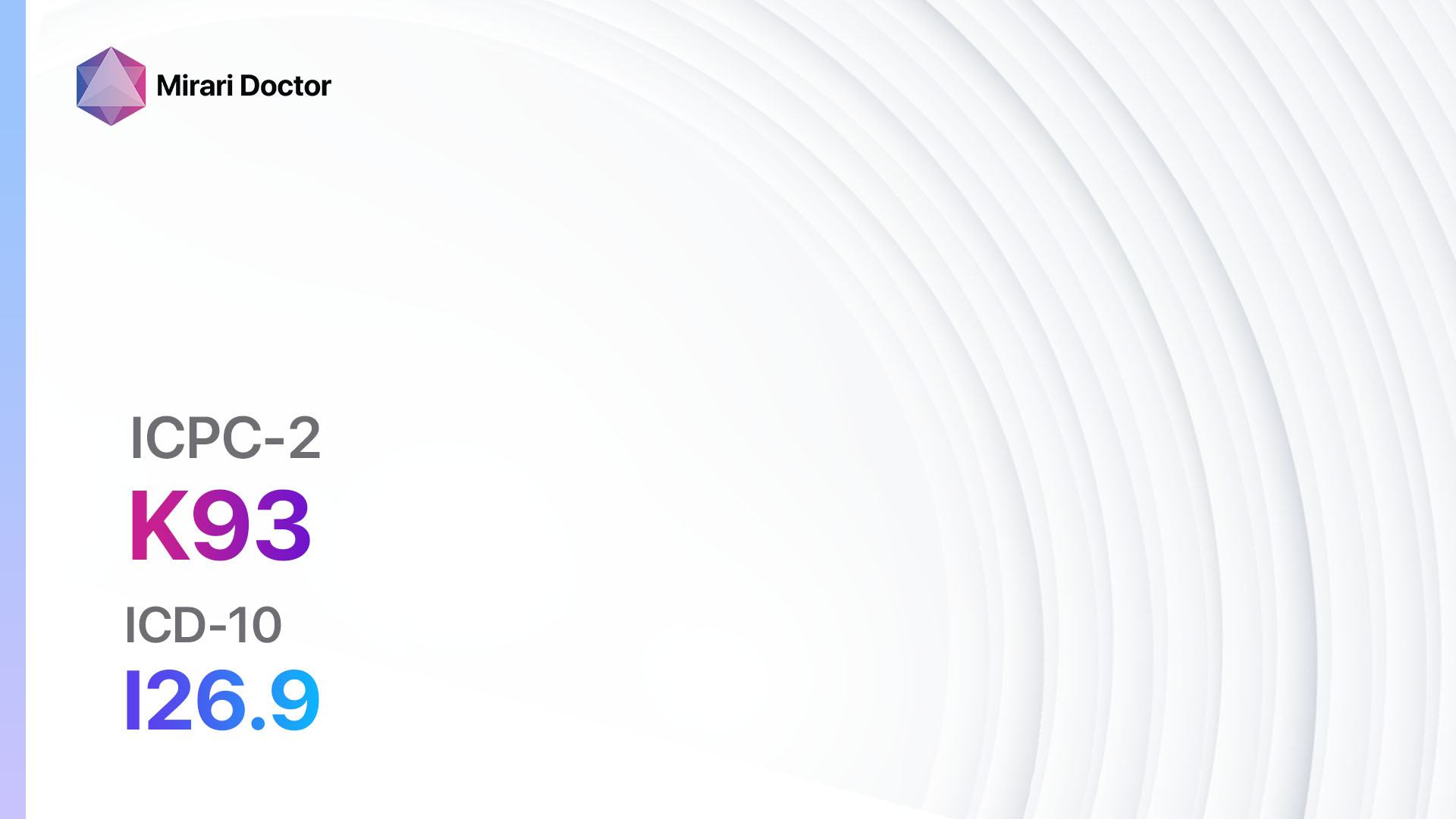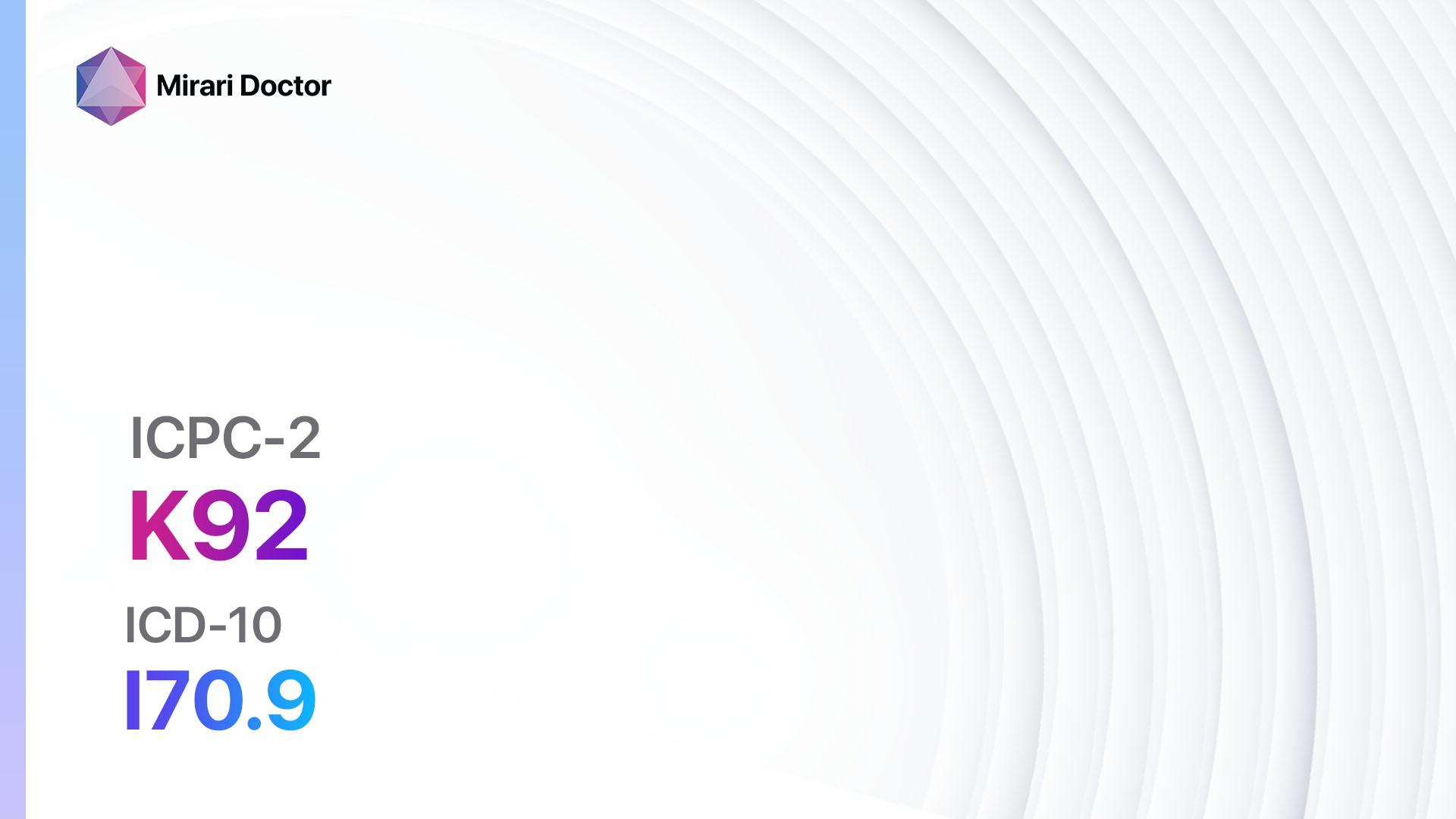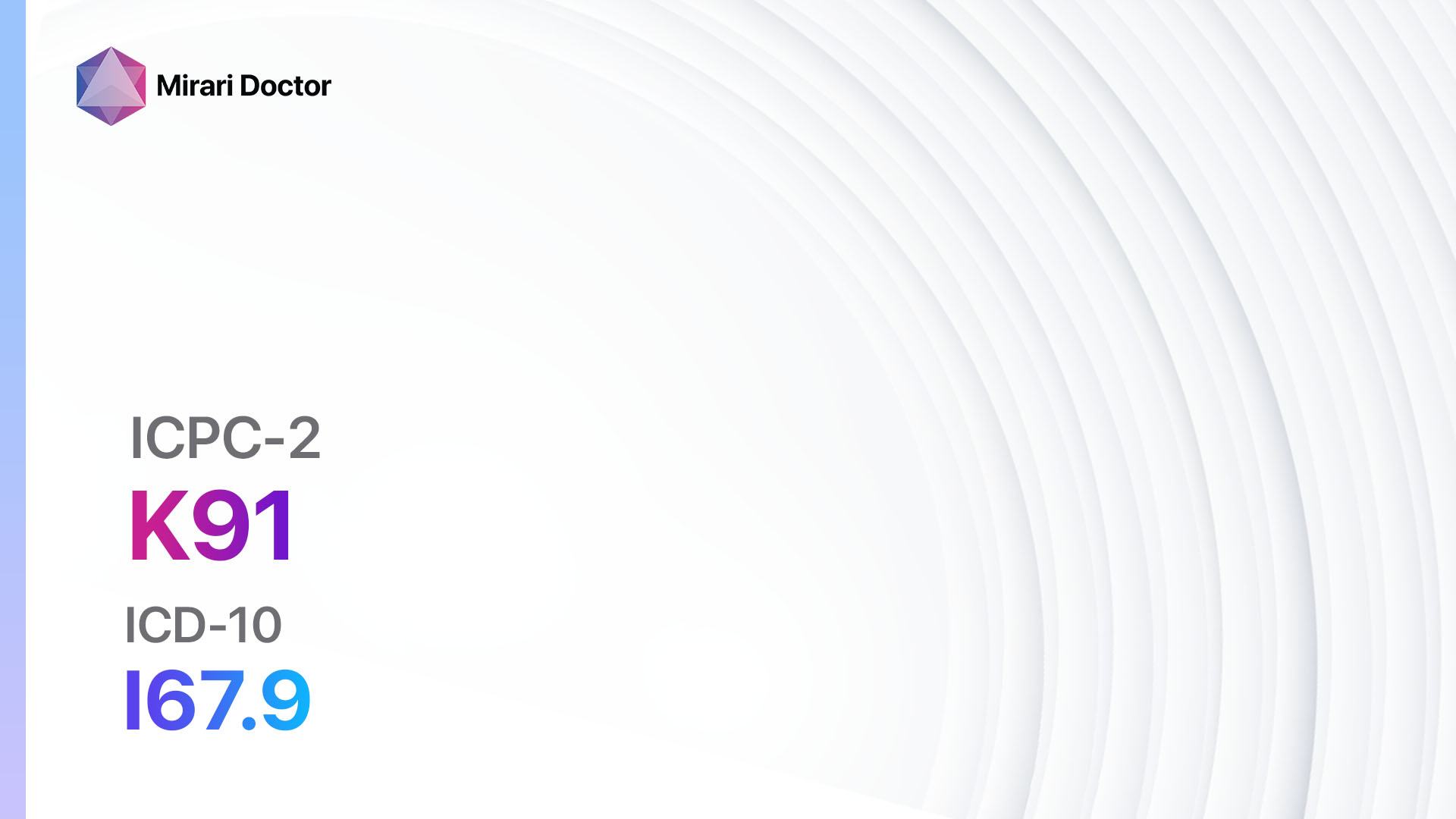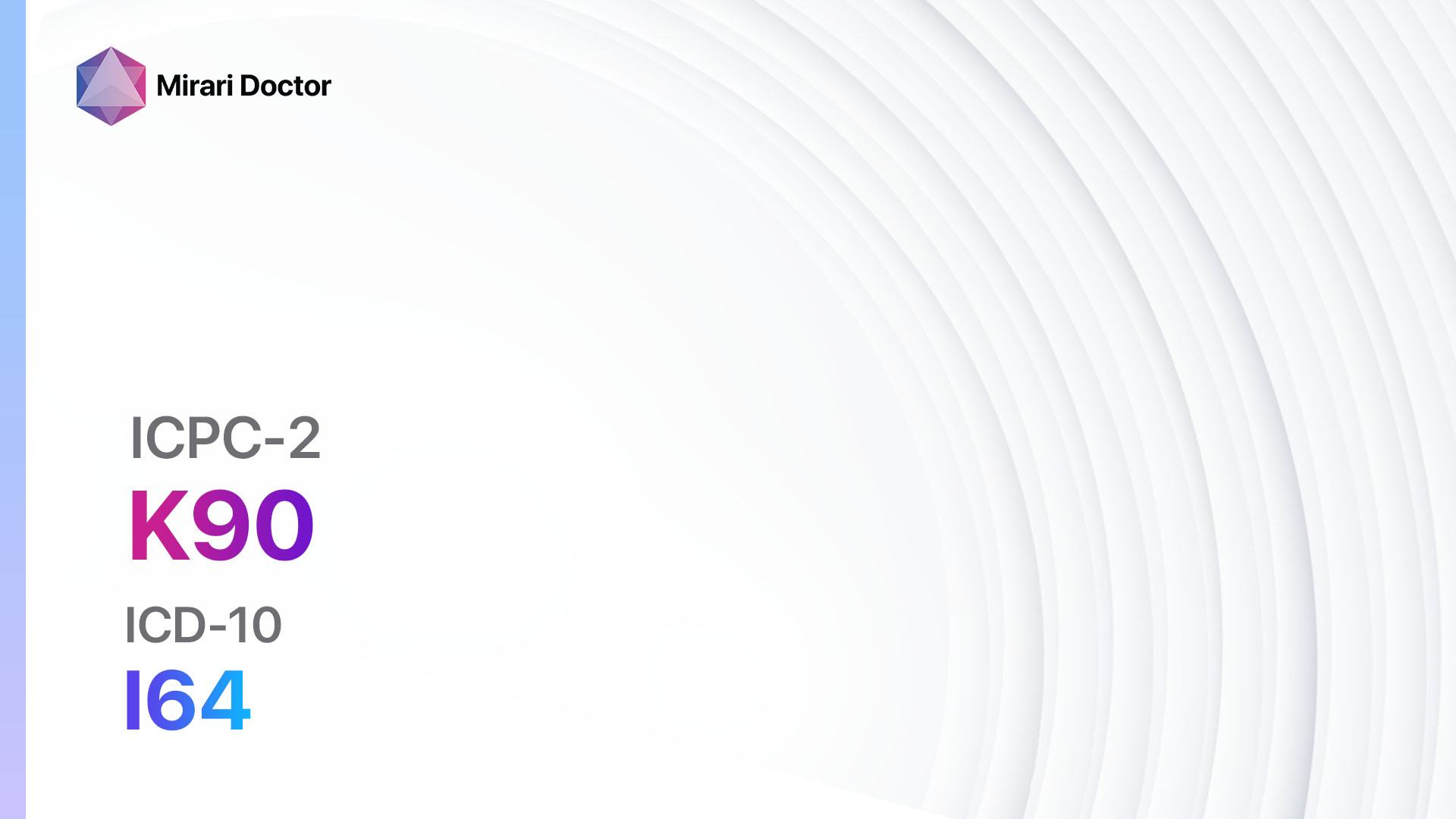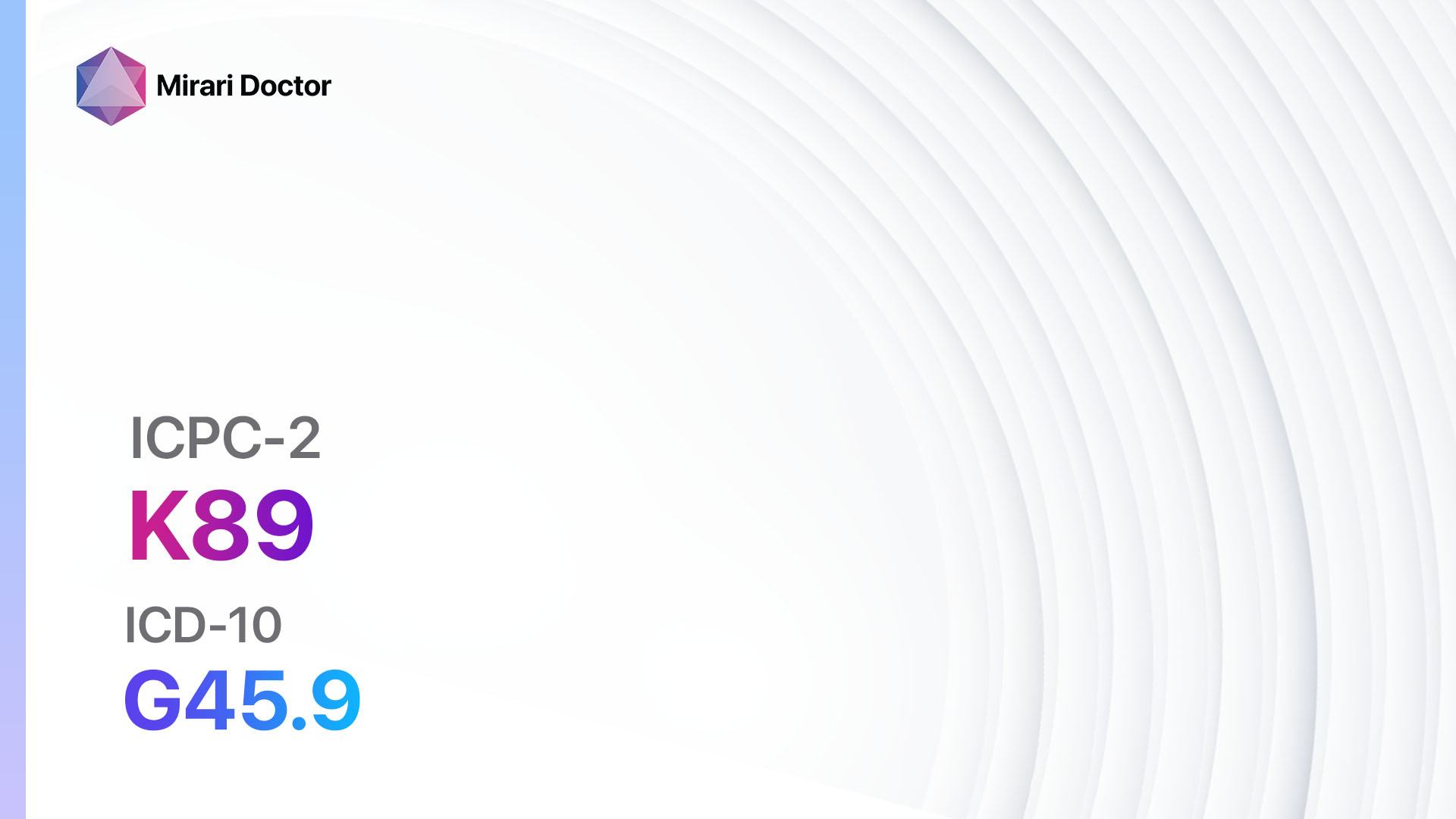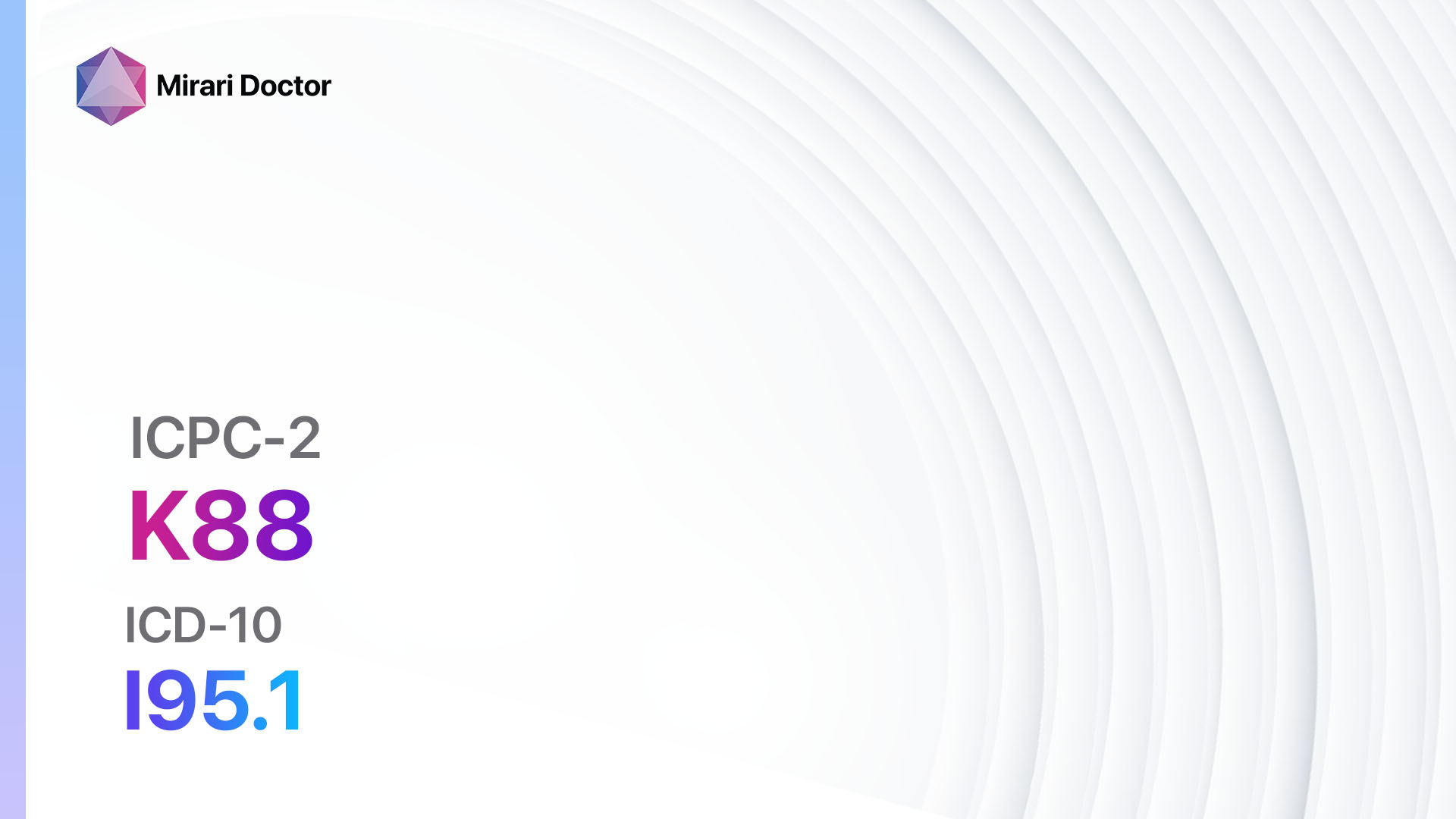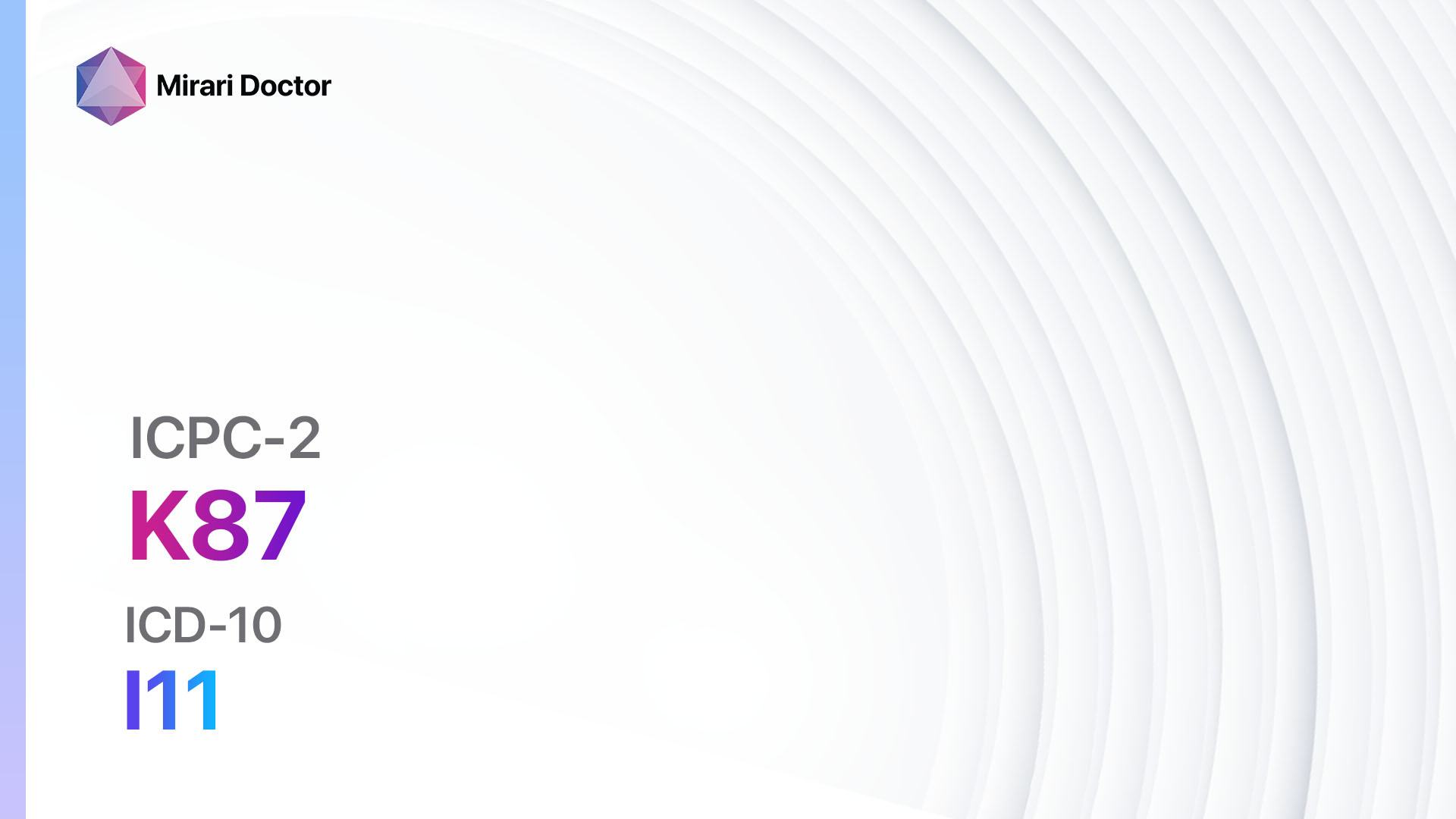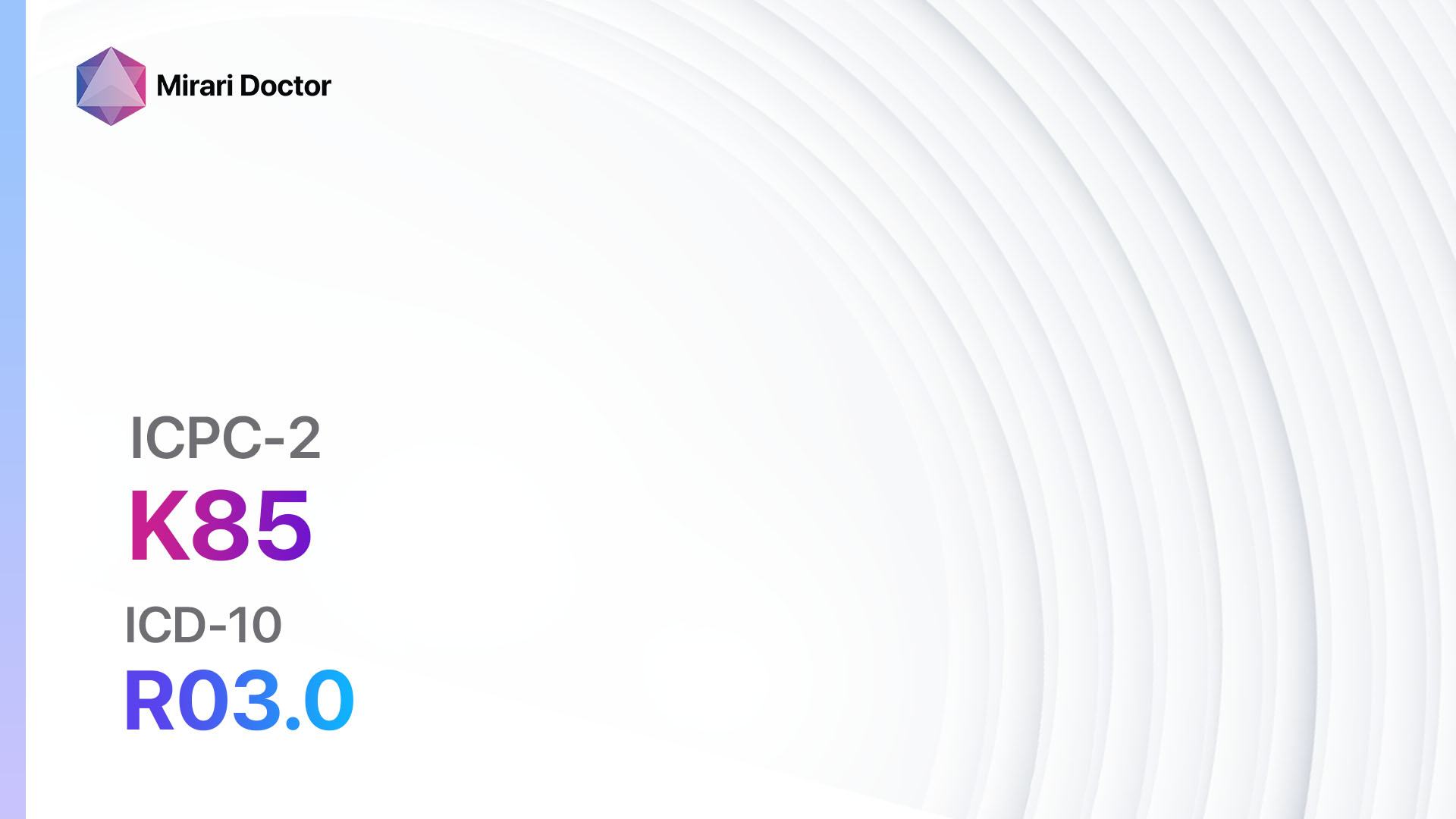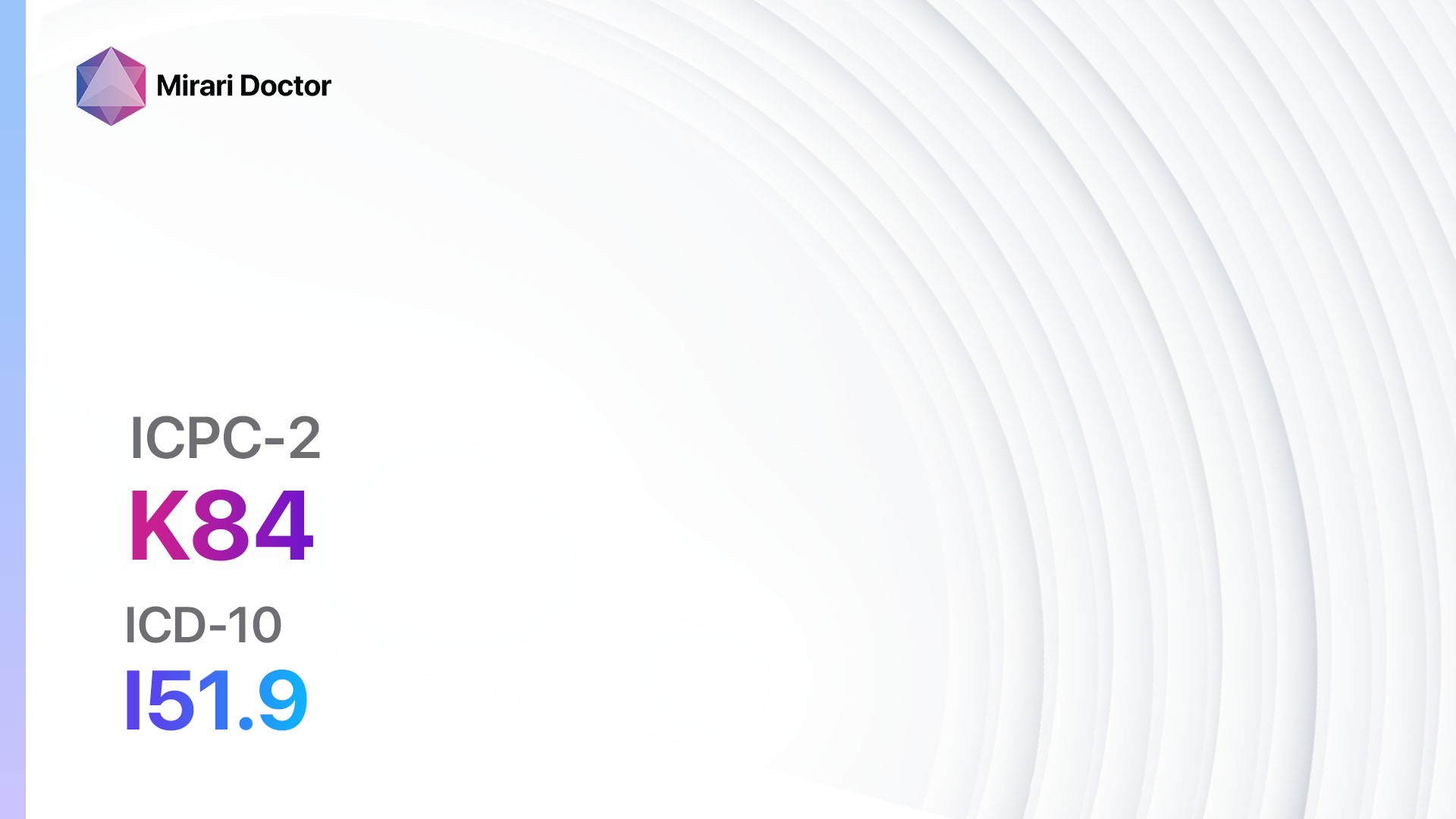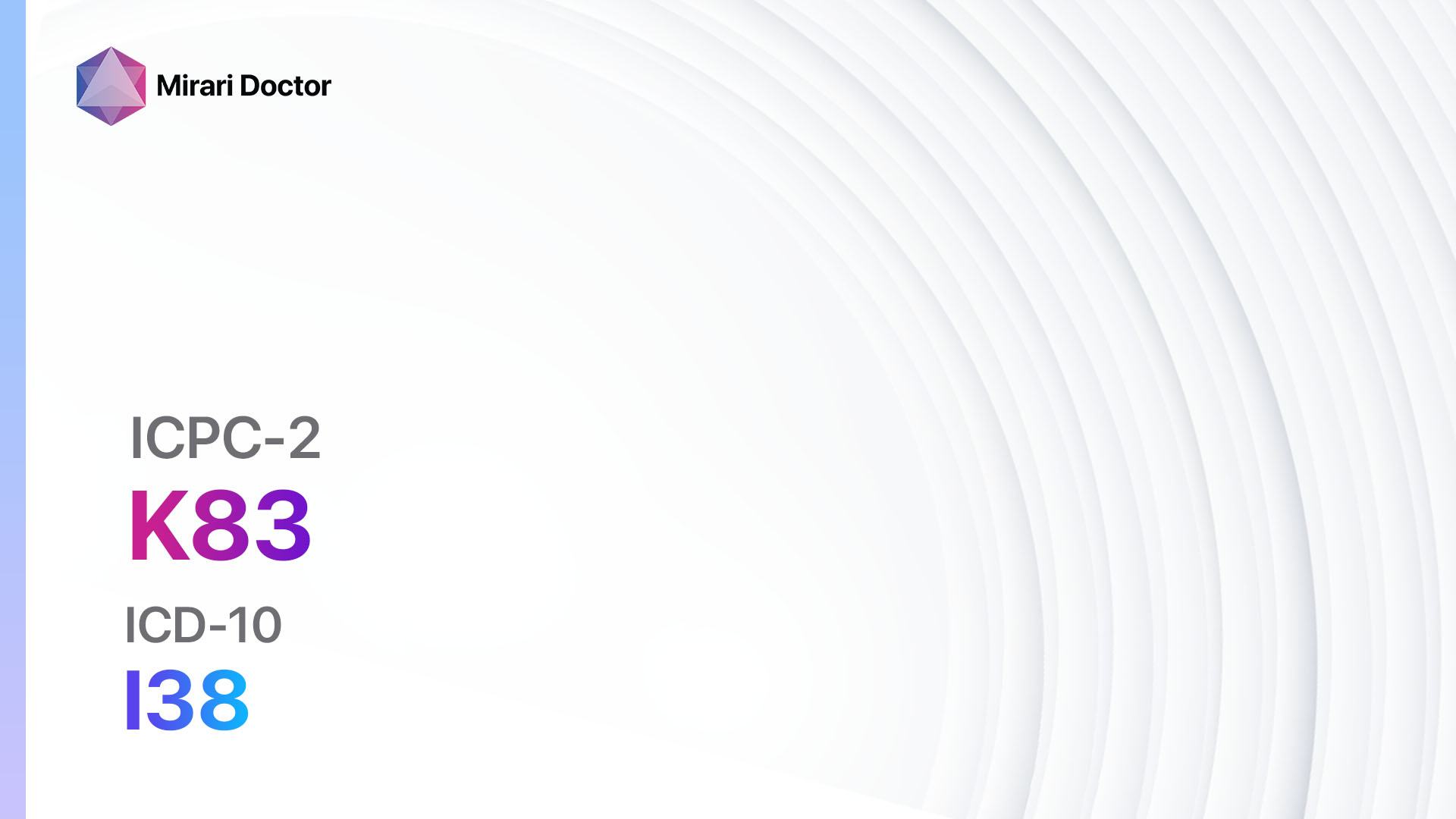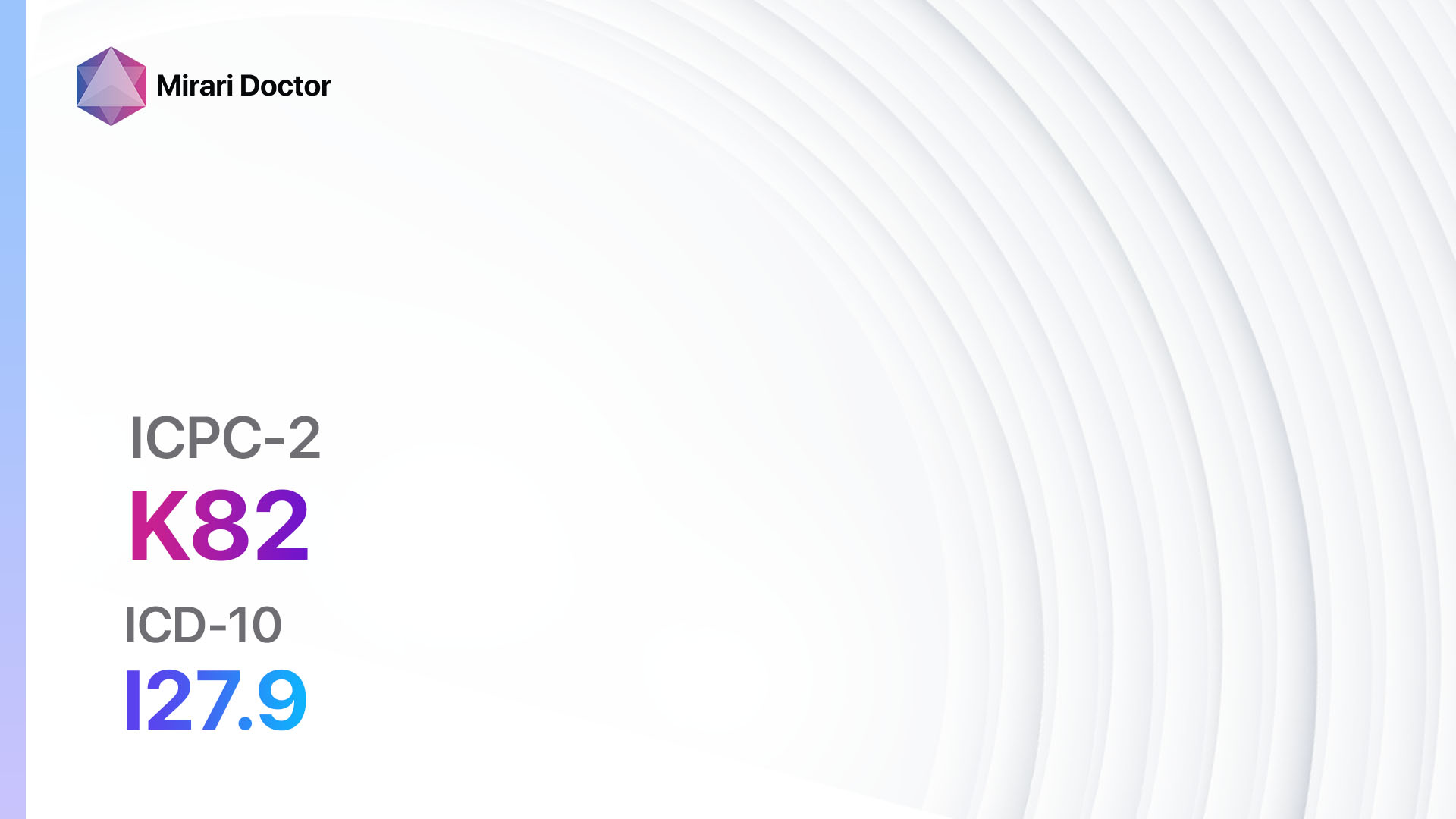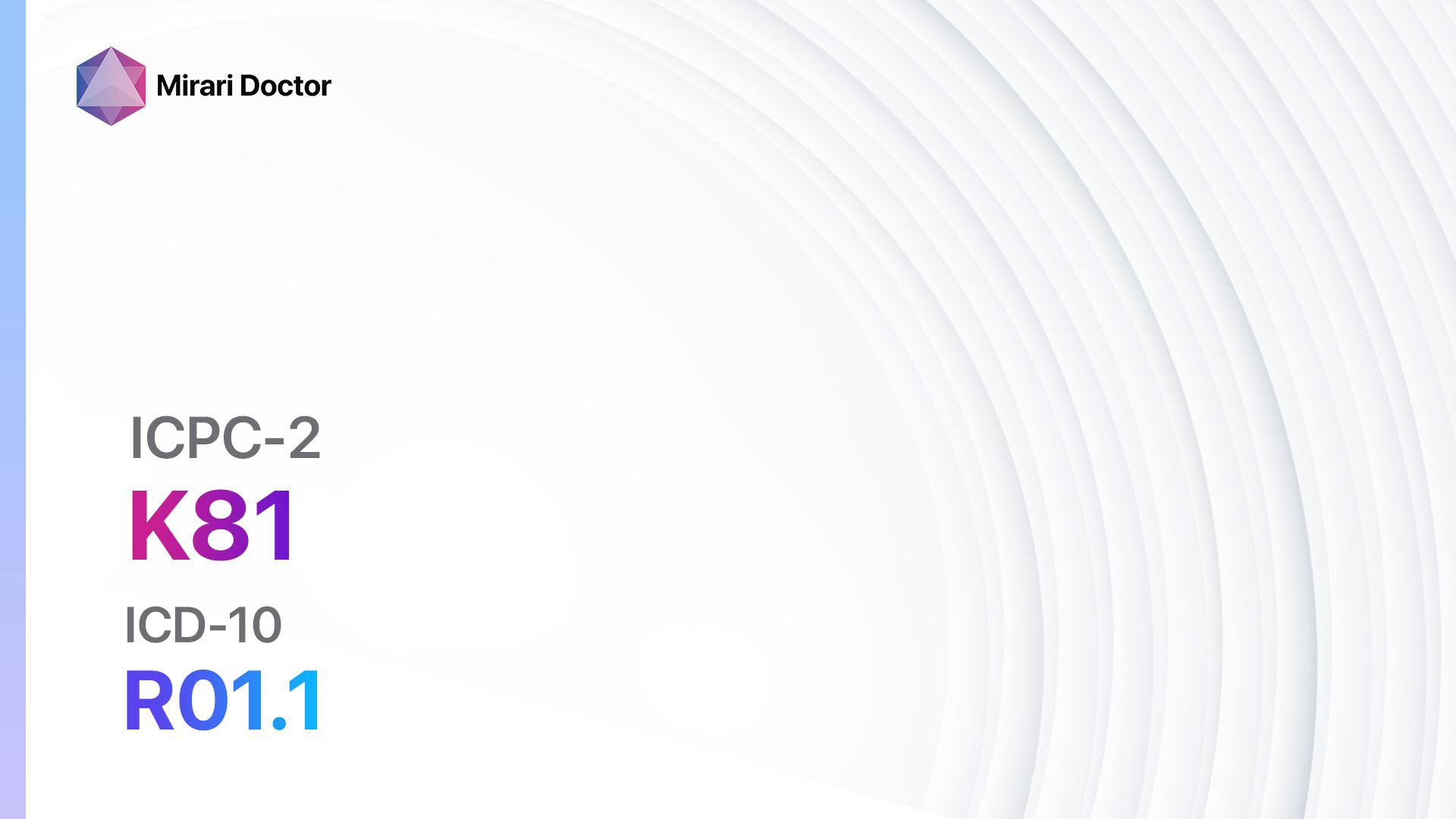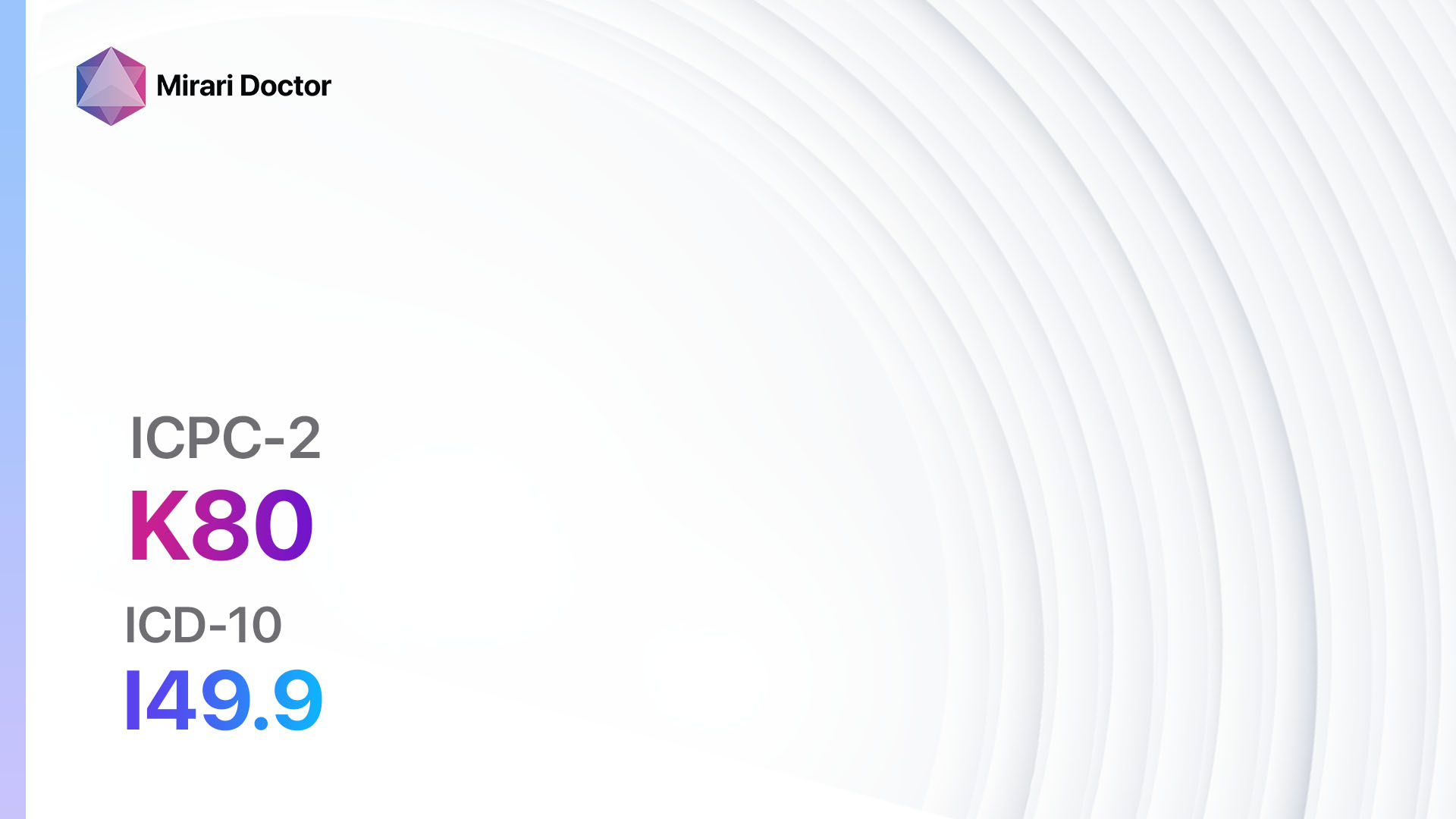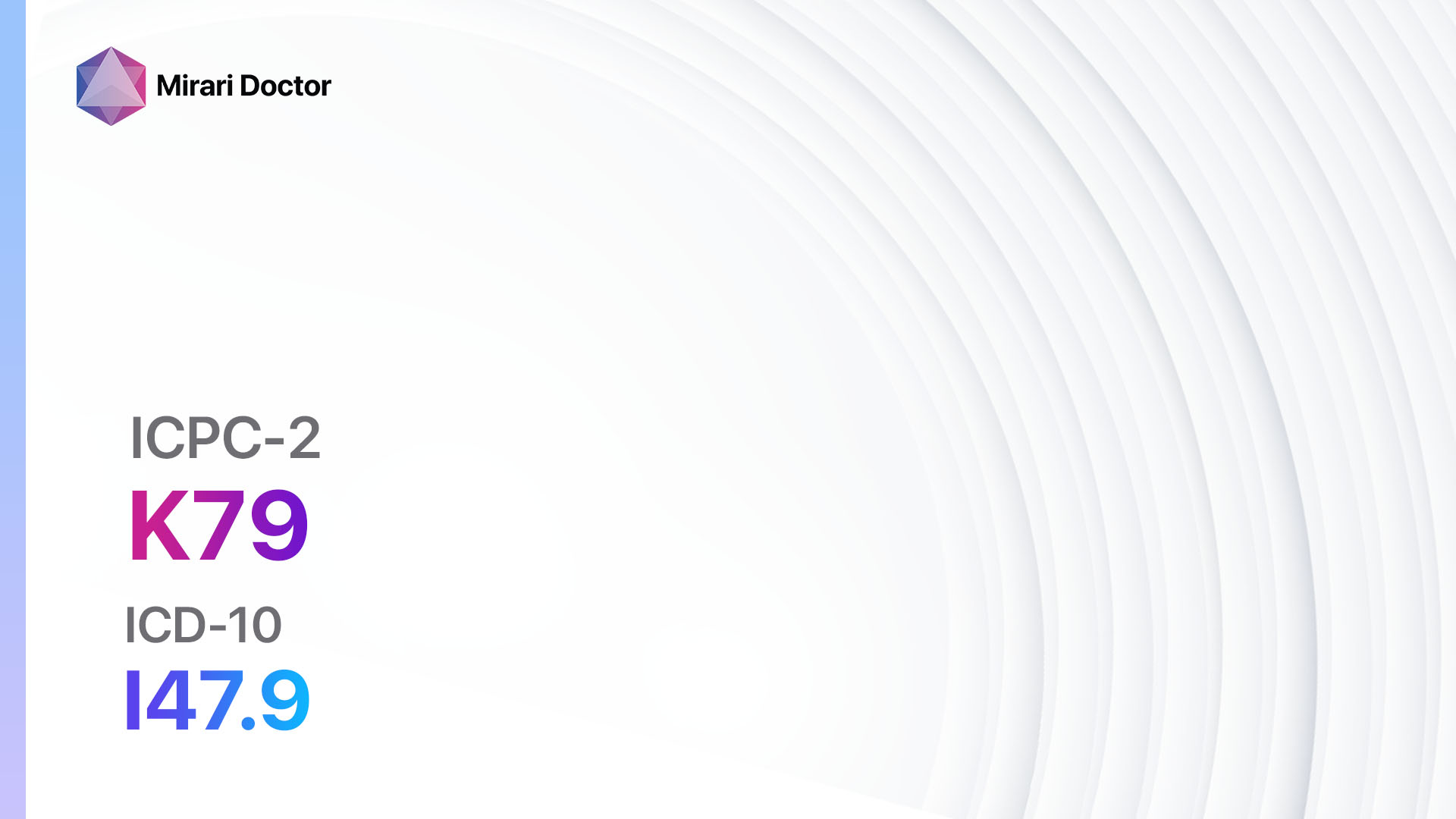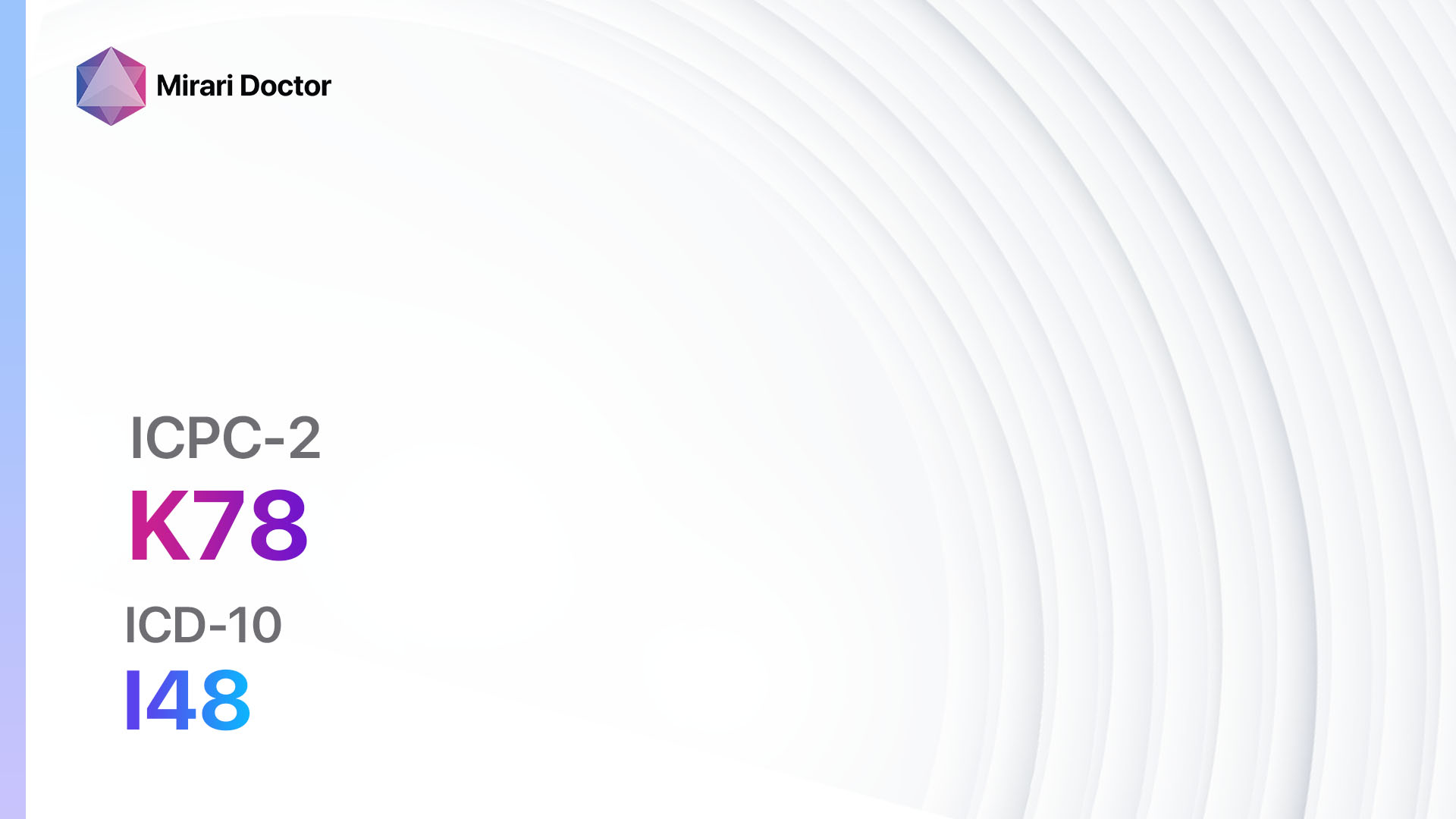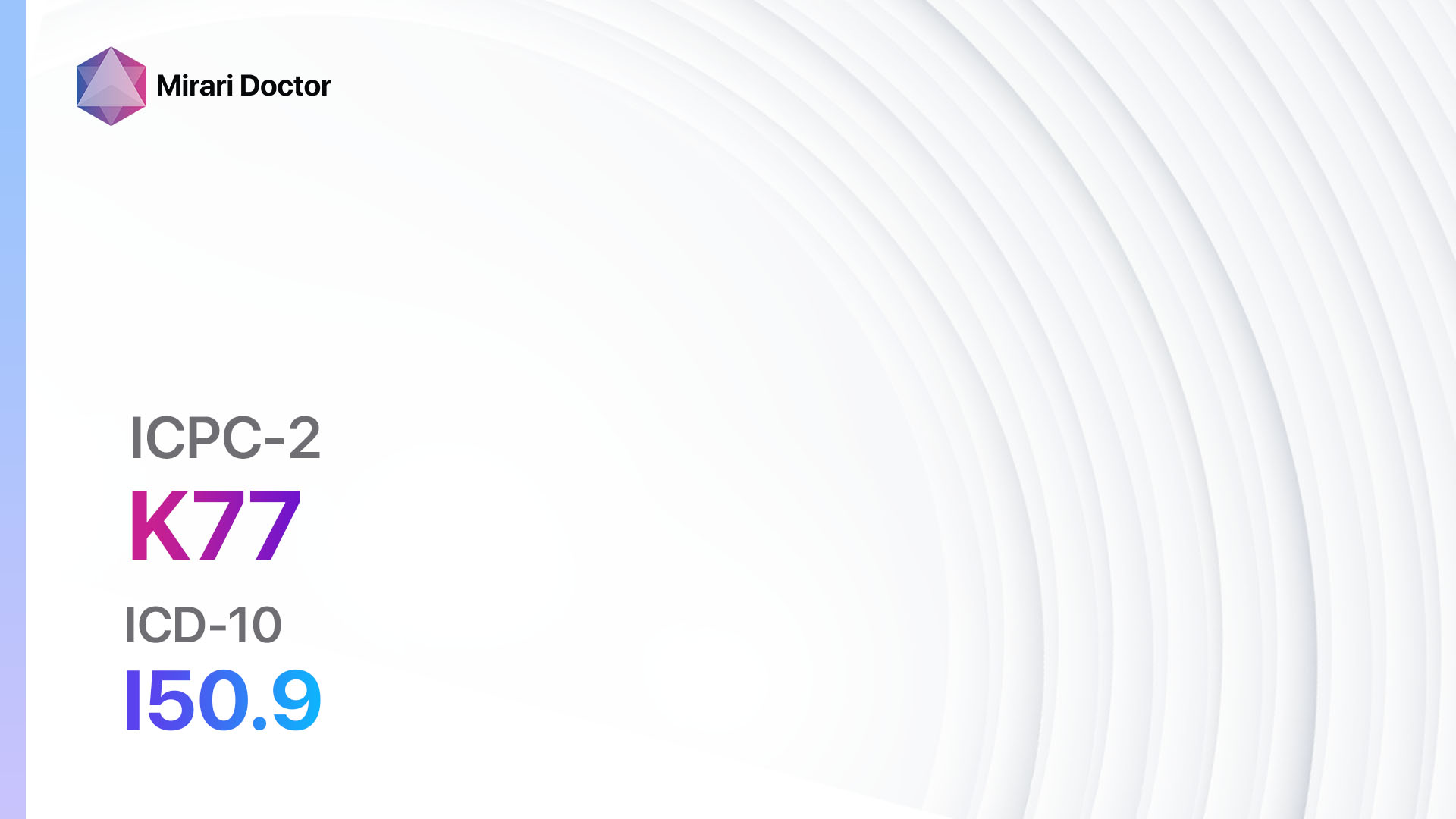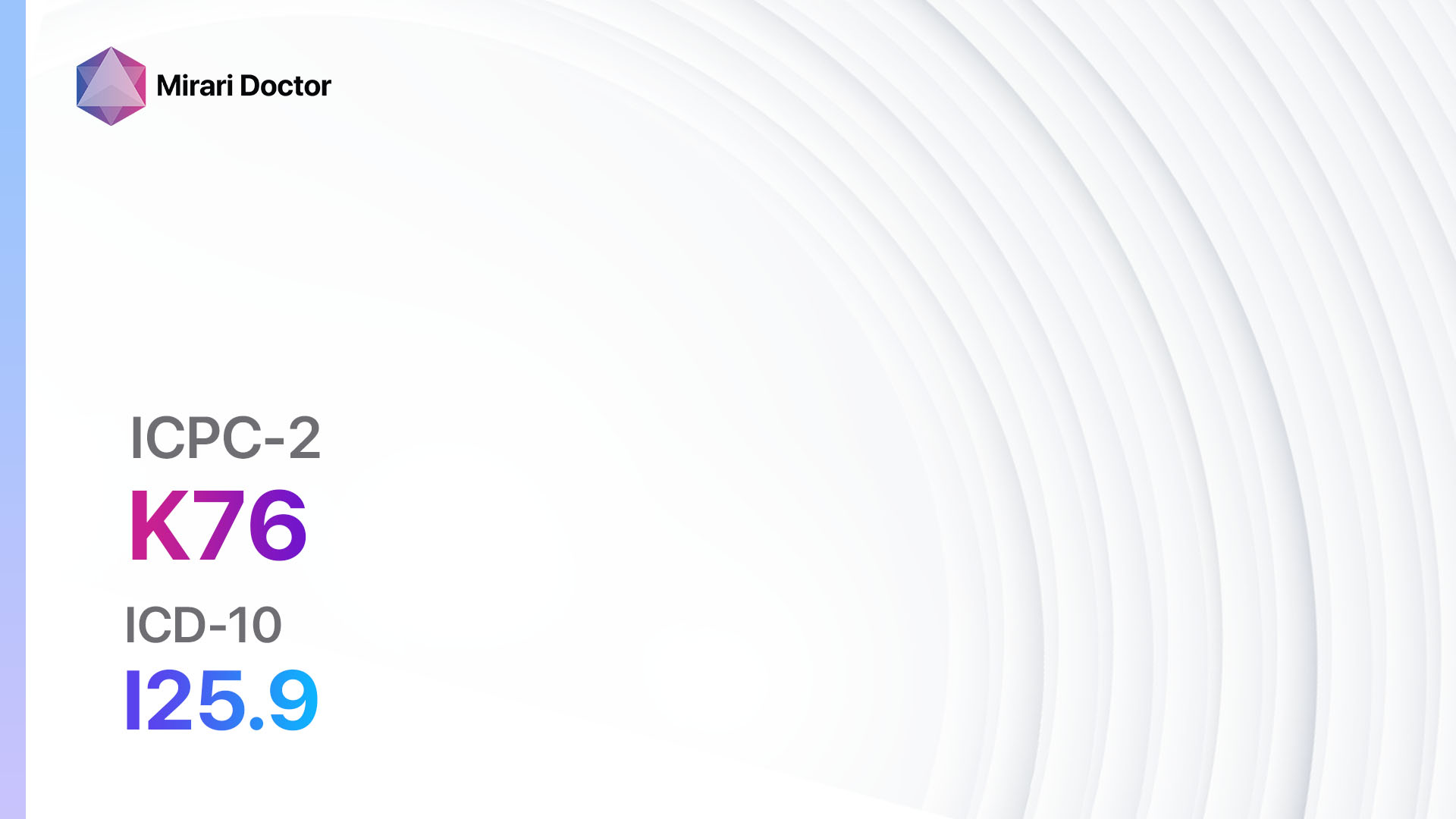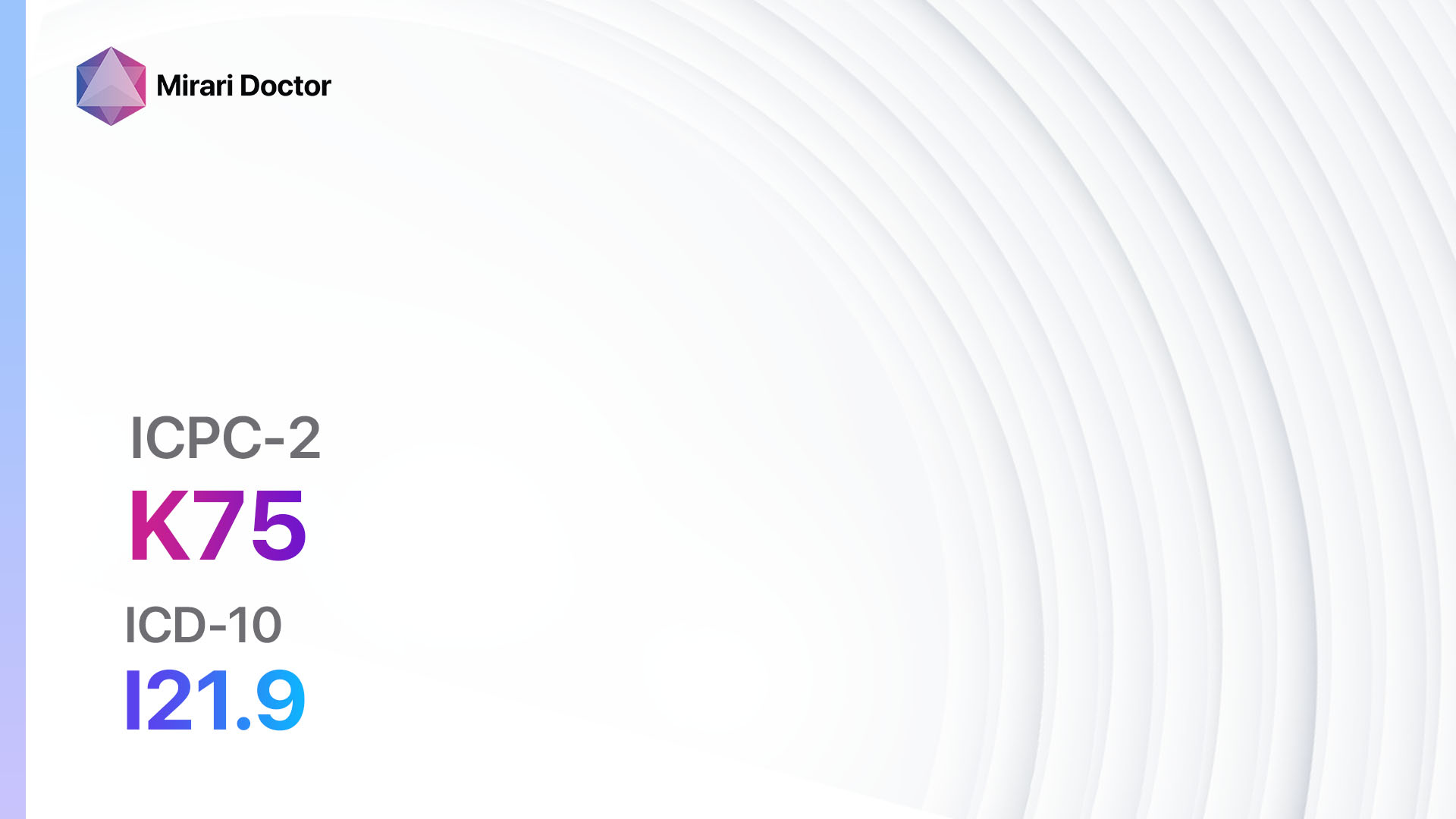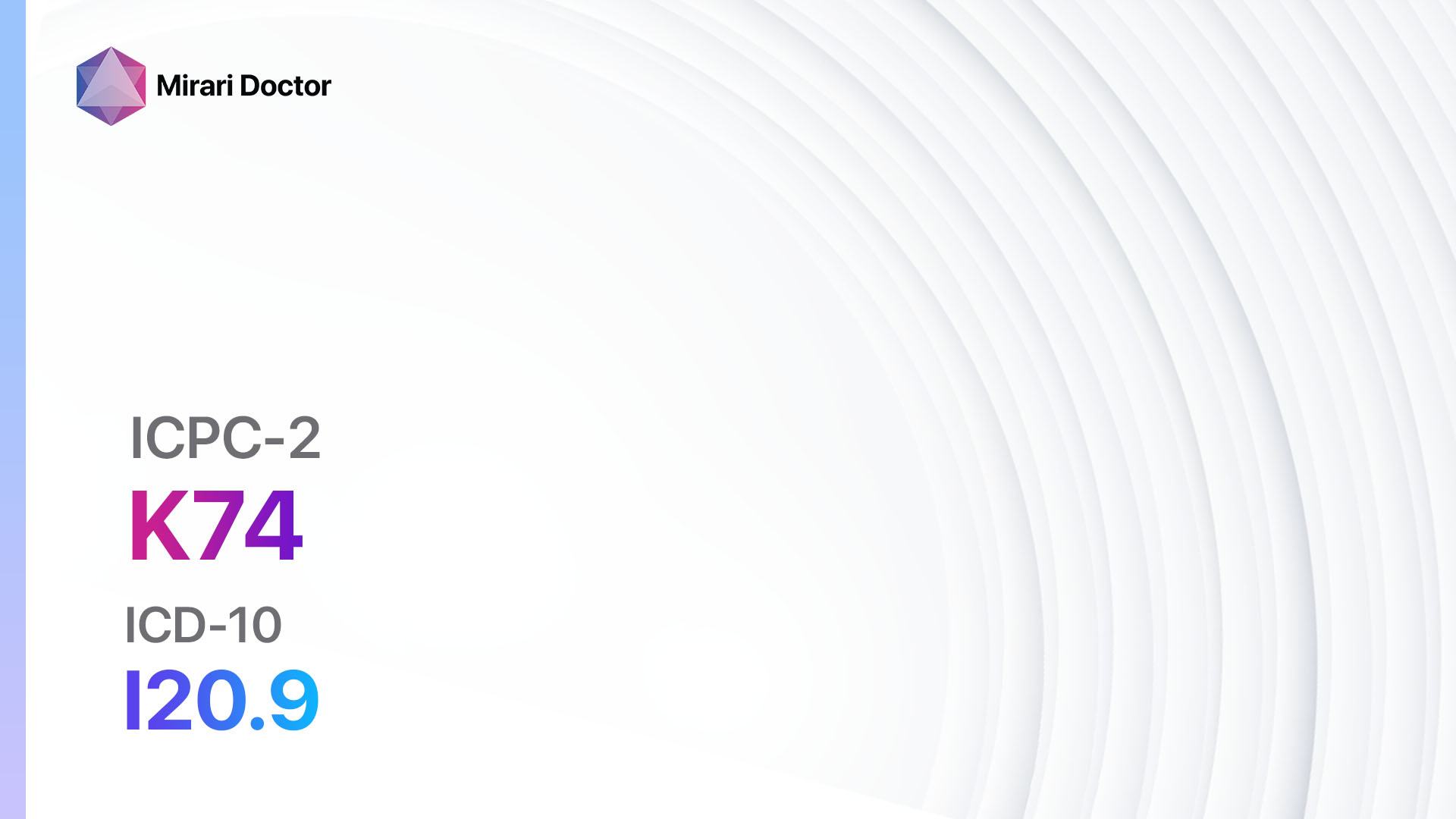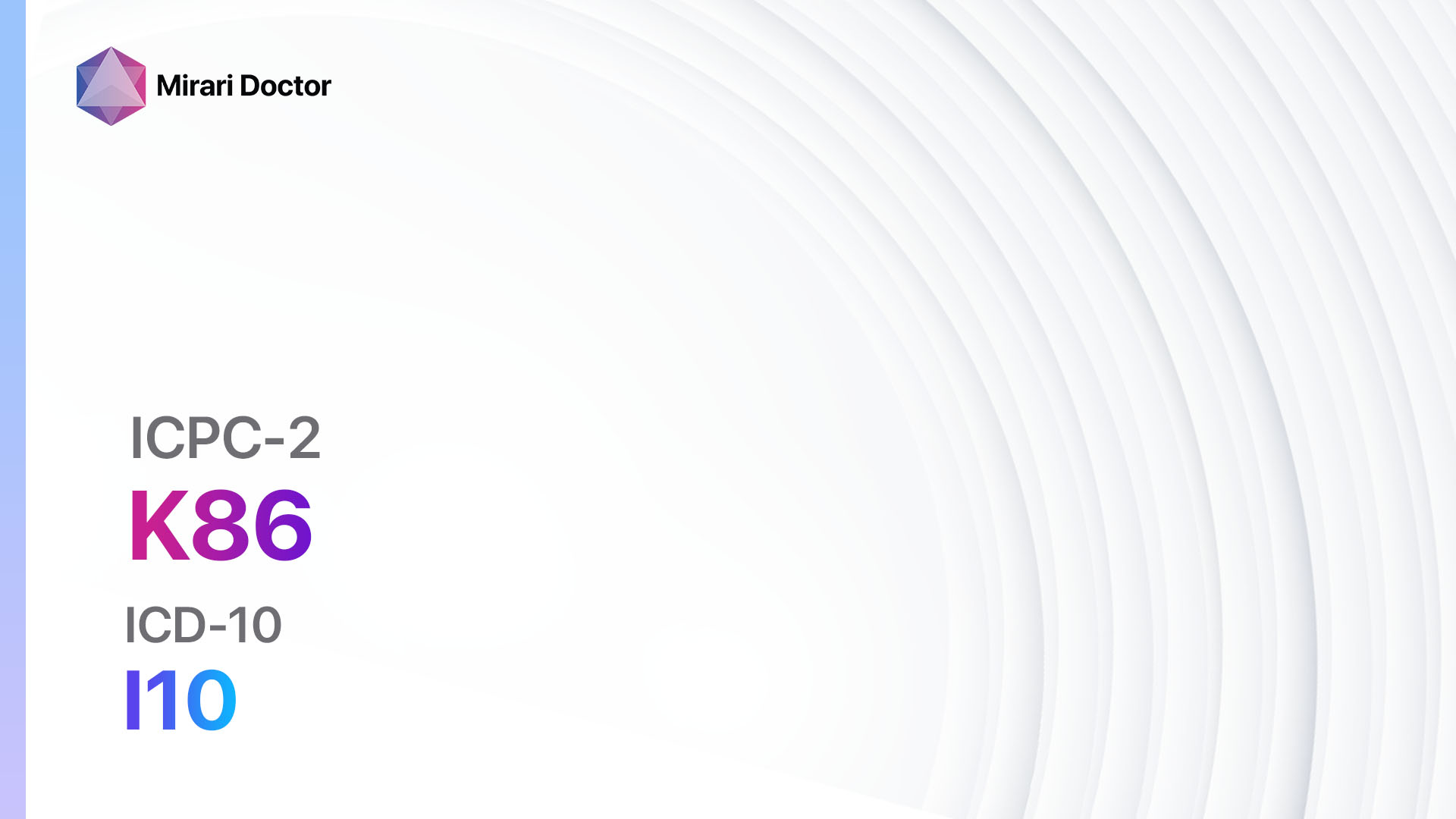
Introduction
Hypertension, also known as high blood pressure, is a common condition that affects millions of people worldwide. It is a significant health concern as it can lead to serious complications such as heart disease, stroke, and kidney problems[1][2]. The aim of this guide is to provide healthcare professionals with a comprehensive overview of the diagnosis and management of hypertension uncomplicated.
Codes
Symptoms
- High blood pressure: Blood pressure consistently higher than 130/80 mm Hg[4].
- Headaches: Frequent or severe headaches[5].
- Dizziness: Feeling lightheaded or dizzy[5].
- Blurred vision: Vision problems or blurred vision[5].
- Chest pain: Chest discomfort or pain[5].
- Shortness of breath: Difficulty breathing or shortness of breath[5].
Causes
- Primary hypertension: The exact cause is unknown, but it is believed to be related to a combination of genetic and environmental factors[6].
- Secondary hypertension: Caused by an underlying medical condition such as kidney disease, hormonal disorders, or certain medications[6].
Diagnostic Steps
Medical History
- Gather information about the patient’s risk factors, including family history of hypertension, smoking, obesity, and sedentary lifestyle[7].
- Inquire about any medical conditions that may contribute to hypertension, such as diabetes, kidney disease, or hormonal disorders[7].
- Ask about symptoms related to hypertension, such as headaches, dizziness, or chest pain[7].
Physical Examination
- Measure blood pressure using a sphygmomanometer and stethoscope[8].
- Check for signs of target organ damage, such as enlarged heart, abnormal heart sounds, or signs of kidney disease[8].
- Assess for any signs of secondary hypertension, such as abdominal bruits or abnormal thyroid gland[8].
Laboratory Tests
- Complete blood count (CBC): To assess for anemia or other blood disorders[9].
- Basic metabolic panel (BMP): To evaluate kidney function, electrolyte levels, and blood glucose[9].
- Lipid profile: To assess cholesterol and triglyceride levels[9].
- Urinalysis: To check for protein or blood in the urine, which may indicate kidney damage[9].
- Thyroid function tests: To evaluate thyroid hormone levels[9].
- Hemoglobin A1c (HbA1c): To assess long-term blood sugar control in patients with diabetes[9].
Diagnostic Imaging
- Electrocardiogram (ECG): To evaluate heart rhythm and detect any signs of heart damage[10].
- Echocardiogram: To assess the structure and function of the heart[10].
- Chest X-ray: To evaluate the size and shape of the heart and detect any signs of heart failure[10].
- Renal ultrasound: To assess the size and structure of the kidneys and detect any abnormalities[10].
Other Tests
- 24-hour ambulatory blood pressure monitoring: To assess blood pressure fluctuations throughout the day and night.
- Exercise stress test: To evaluate the heart’s response to physical activity.
- Renal artery duplex ultrasound: To assess blood flow in the renal arteries and detect any narrowing or blockages.
Follow-up and Patient Education
- Schedule regular follow-up appointments to monitor blood pressure and adjust treatment if necessary.
- Educate the patient about the importance of lifestyle modifications, including a healthy diet, regular exercise, weight management, and smoking cessation.
- Discuss the potential benefits and risks of medication therapy, and address any concerns or questions the patient may have.
Possible Interventions
Traditional Interventions
Medications:
Top 5 drugs for Hypertension uncomplicated:
- Thiazide diuretics (e.g., Hydrochlorothiazide):
- Cost: Generic versions can be $3-$20/month.
- Contraindications: Allergy to sulfa drugs, severe kidney disease.
- Side effects: Increased urination, low potassium levels.
- Severe side effects: Allergic reactions, electrolyte imbalances.
- Drug interactions: Nonsteroidal anti-inflammatory drugs (NSAIDs), lithium.
- Warning: Regular monitoring of electrolytes and kidney function is required.
- Angiotensin-converting enzyme (ACE) inhibitors (e.g., Lisinopril):
- Cost: Generic versions can be $10-$50/month.
- Contraindications: History of angioedema with ACE inhibitors, bilateral renal artery stenosis.
- Side effects: Dry cough, dizziness.
- Severe side effects: Angioedema, hyperkalemia.
- Drug interactions: Potassium supplements, nonsteroidal anti-inflammatory drugs (NSAIDs).
- Warning: Regular monitoring of kidney function and potassium levels is required.
- Angiotensin II receptor blockers (ARBs) (e.g., Losartan):
- Cost: Generic versions can be $10-$50/month.
- Contraindications: History of angioedema with ARBs, bilateral renal artery stenosis.
- Side effects: Dizziness, fatigue.
- Severe side effects: Angioedema, hyperkalemia.
- Drug interactions: Potassium supplements, nonsteroidal anti-inflammatory drugs (NSAIDs).
- Warning: Regular monitoring of kidney function and potassium levels is required.
- Calcium channel blockers (e.g., Amlodipine):
- Cost: Generic versions can be $10-$50/month.
- Contraindications: Severe heart failure, heart block.
- Side effects: Swelling of the ankles, flushing.
- Severe side effects: Severe low blood pressure, heart rhythm disturbances.
- Drug interactions: Grapefruit juice, beta-blockers.
- Warning: Regular monitoring of blood pressure and heart rate is required.
- Beta-blockers (e.g., Metoprolol):
- Cost: Generic versions can be $10-$30/month.
- Contraindications: Severe bradycardia, heart block.
- Side effects: Fatigue, dizziness.
- Severe side effects: Bronchospasm, heart failure exacerbation.
- Drug interactions: Calcium channel blockers, insulin.
- Warning: Should not be abruptly stopped.
Alternative Drugs:
- Alpha-blockers (e.g., Doxazosin): May be used in combination with other antihypertensive medications.
- Direct renin inhibitors (e.g., Aliskiren): Inhibits the enzyme renin, reducing the production of angiotensin II.
- Central alpha-2 agonists (e.g., Clonidine): May be used in patients with resistant hypertension.
- Vasodilators (e.g., Hydralazine): May be used in combination with other antihypertensive medications.
- Potassium-sparing diuretics (e.g., Spironolactone): May be used in patients with resistant hypertension or as an adjunct to other antihypertensive medications.
Surgical Procedures:
- Renal denervation: A minimally invasive procedure that disrupts the nerves in the kidneys to reduce blood pressure. Cost: $10,000 to $20,000.
- Bariatric surgery: Weight loss surgery that can lead to significant improvements in blood pressure control. Cost: $20,000 to $35,000.
Alternative Interventions
- Acupuncture: May help reduce blood pressure and promote relaxation. Cost: $60-$120 per session.
- Yoga and meditation: Can help reduce stress and lower blood pressure. Cost: Varies depending on the class or instructor.
- Dietary supplements: Some supplements, such as garlic extract or coenzyme Q10, may have potential benefits for blood pressure control. Cost: Varies depending on the specific supplement.
- Biofeedback: A technique that helps individuals learn how to control certain bodily functions, including blood pressure. Cost: $50-$100 per session.
- Transcendental meditation: A specific form of meditation that has been shown to lower blood pressure. Cost: Varies depending on the instructor or program.
Lifestyle Interventions
- Dietary modifications: Encourage a diet rich in fruits, vegetables, whole grains, lean proteins, and low-fat dairy products. Limit sodium intake to less than 2,300 mg per day.
- Regular exercise: Recommend at least 150 minutes of moderate-intensity aerobic activity or 75 minutes of vigorous-intensity aerobic activity per week.
- Weight management: Encourage weight loss in overweight or obese individuals to achieve a body mass index (BMI) within the normal range.
- Smoking cessation: Advise patients to quit smoking and provide resources for smoking cessation programs.
- Limit alcohol consumption: Recommend no more than moderate alcohol consumption (up to one drink per day for women and up to two drinks per day for men).
It is important to note that the cost ranges provided are approximate and may vary depending on the location and availability of the interventions.
Mirari Cold Plasma Alternative Intervention
Understanding Mirari Cold Plasma
- Safe and Non-Invasive Treatment: Mirari Cold Plasma is a safe and non-invasive treatment option for various skin conditions. It does not require incisions, minimizing the risk of scarring, bleeding, or tissue damage.
- Efficient Extraction of Foreign Bodies: Mirari Cold Plasma facilitates the removal of foreign bodies from the skin by degrading and dissociating organic matter, allowing easier access and extraction.
- Pain Reduction and Comfort: Mirari Cold Plasma has a local analgesic effect, providing pain relief during the treatment, making it more comfortable for the patient.
- Reduced Risk of Infection: Mirari Cold Plasma has antimicrobial properties, effectively killing bacteria and reducing the risk of infection.
- Accelerated Healing and Minimal Scarring: Mirari Cold Plasma stimulates wound healing and tissue regeneration, reducing healing time and minimizing the formation of scars.
Mirari Cold Plasma Prescription
Video instructions for using Mirari Cold Plasma Device – K86 Hypertension uncomplicated (ICD-10:I10)
| Mild | Moderate | Severe |
| Mode setting: 1 (Infection) Location: 5 (Lungs) Morning: 15 minutes, Evening: 15 minutes |
Mode setting: 1 (Infection) Location: 5 (Lungs) Morning: 30 minutes, Lunch: 30 minutes, Evening: 30 minutes |
Mode setting: 1 (Infection) Location: 5 (Lungs) Morning: 30 minutes, Lunch: 30 minutes, Evening: 30 minutes |
| Mode setting: 2 (Wound Healing) Location: 5 (Lungs) Morning: 15 minutes, Evening: 15 minutes |
Mode setting: 2 (Wound Healing) Location: 5 (Lungs) Morning: 30 minutes, Lunch: 30 minutes, Evening: 30 minutes |
Mode setting: 2 (Wound Healing) Location: 5 (Lungs) Morning: 30 minutes, Lunch: 30 minutes, Evening: 30 minutes |
| Mode setting: 7 (Immunotherapy) Location: 1 (Sacrum) Morning: 15 minutes, Evening: 15 minutes |
Mode setting: 7 (Immunotherapy) Location: 1 (Sacrum) Morning: 30 minutes, Lunch: 30 minutes, Evening: 30 minutes |
Mode setting: 7 (Immunotherapy) Location: 1 (Sacrum) Morning: 30 minutes, Lunch: 30 minutes, Evening: 30 minutes |
| Mode setting: 7 (Immunotherapy) Location: 4 (Heart, Bile & Pancreas) Morning: 15 minutes, Evening: 15 minutes |
Mode setting: 7 (Immunotherapy) Location: 4 (Heart, Bile & Pancreas) Morning: 30 minutes, Lunch: 30 minutes, Evening: 30 minutes |
Mode setting:7 (Immunotherapy) Location: 4 (Heart, Bile & Pancreas) Morning: 30 minutes, Lunch: 30 minutes, Evening: 30 minutes |
| Total Morning: 60 minutes approx. $10 USD, Evening: 60 minutes approx. $10 USD |
Total Morning: 120 minutes approx. $20 USD, Lunch: 120 minutes approx. $20 USD, Evening: 120 minutes approx. $20 USD, |
Total Morning: 120 minutes approx. $20 USD, Lunch: 120 minutes approx. $20 USD, Evening: 120 minutes approx. $20 USD, |
| Usual treatment for 7-60 days approx. $140 USD – $1200 USD | Usual treatment for 6-8 weeks approx. $2,520 USD – $3,360 USD |
Usual treatment for 3-6 months approx. $5,400 USD – $10,800 USD
|
 |
|
Use the Mirari Cold Plasma device to treat Hypertension uncomplicated effectively.
WARNING: MIRARI COLD PLASMA IS DESIGNED FOR THE HUMAN BODY WITHOUT ANY ARTIFICIAL OR THIRD PARTY PRODUCTS. USE OF OTHER PRODUCTS IN COMBINATION WITH MIRARI COLD PLASMA MAY CAUSE UNPREDICTABLE EFFECTS, HARM OR INJURY. PLEASE CONSULT A MEDICAL PROFESSIONAL BEFORE COMBINING ANY OTHER PRODUCTS WITH USE OF MIRARI.
Step 1: Cleanse the Skin
- Start by cleaning the affected area of the skin with a gentle cleanser or mild soap and water. Gently pat the area dry with a clean towel.
Step 2: Prepare the Mirari Cold Plasma device
- Ensure that the Mirari Cold Plasma device is fully charged or has fresh batteries as per the manufacturer’s instructions. Make sure the device is clean and in good working condition.
- Switch on the Mirari device using the power button or by following the specific instructions provided with the device.
- Some Mirari devices may have adjustable settings for intensity or treatment duration. Follow the manufacturer’s instructions to select the appropriate settings based on your needs and the recommended guidelines.
Step 3: Apply the Device
- Place the Mirari device in direct contact with the affected area of the skin. Gently glide or hold the device over the skin surface, ensuring even coverage of the area experiencing.
- Slowly move the Mirari device in a circular motion or follow a specific pattern as indicated in the user manual. This helps ensure thorough treatment coverage.
Step 4: Monitor and Assess:
- Keep track of your progress and evaluate the effectiveness of the Mirari device in managing your Hypertension uncomplicated. If you have any concerns or notice any adverse reactions, consult with your health care professional.
Note
This guide is for informational purposes only and should not replace the advice of a medical professional. Always consult with your healthcare provider or a qualified medical professional for personal advice, diagnosis, or treatment. Do not solely rely on the information presented here for decisions about your health. Use of this information is at your own risk. The authors of this guide, nor any associated entities or platforms, are not responsible for any potential adverse effects or outcomes based on the content.
Mirari Cold Plasma System Disclaimer
- Purpose: The Mirari Cold Plasma System is a Class 2 medical device designed for use by trained healthcare professionals. It is registered for use in Thailand and Vietnam. It is not intended for use outside of these locations.
- Informational Use: The content and information provided with the device are for educational and informational purposes only. They are not a substitute for professional medical advice or care.
- Variable Outcomes: While the device is approved for specific uses, individual outcomes can differ. We do not assert or guarantee specific medical outcomes.
- Consultation: Prior to utilizing the device or making decisions based on its content, it is essential to consult with a Certified Mirari Tele-Therapist and your medical healthcare provider regarding specific protocols.
- Liability: By using this device, users are acknowledging and accepting all potential risks. Neither the manufacturer nor the distributor will be held accountable for any adverse reactions, injuries, or damages stemming from its use.
- Geographical Availability: This device has received approval for designated purposes by the Thai and Vietnam FDA. As of now, outside of Thailand and Vietnam, the Mirari Cold Plasma System is not available for purchase or use.
References
- Whelton PK, Carey RM, Aronow WS, et al. 2017 ACC/AHA/AAPA/ABC/ACPM/AGS/APhA/ASH/ASPC/NMA/PCNA Guideline for the Prevention, Detection, Evaluation, and Management of High Blood Pressure in Adults: A Report of the American College of Cardiology/American Heart Association Task Force on Clinical Practice Guidelines. Hypertension. 2018;71(6):e13-e115. doi:10.1161/HYP.0000000000000065
- Williams B, Mancia G, Spiering W, et al. 2018 ESC/ESH Guidelines for the management of arterial hypertension. Eur Heart J. 2018;39(33):3021-3104. doi:10.1093/eurheartj/ehy339
- ICD-10 Version:2019. World Health Organization. https://icd.who.int/browse10/2019/en#/I10-I15. Accessed April 30, 2024.
- Unger T, Borghi C, Charchar F, et al. 2020 International Society of Hypertension Global Hypertension Practice Guidelines. Hypertension. 2020;75(6):1334-1357. doi:10.1161/HYPERTENSIONAHA.120.15026
- Salkic S, Batic-Mujanovic O, Ljuca F, Brkic S. Clinical presentation of hypertensive crises in emergency medical services. Mater Sociomed. 2014;26(1):12-16. doi:10.5455/msm.2014.26.12-16
- Oparil S, Acelajado MC, Bakris GL, et al. Hypertension. Nat Rev Dis Primers. 2018;4:18014. doi:10.1038/nrdp.2018.14
- Whelton PK, Carey RM, Aronow WS, et al. 2017 ACC/AHA/AAPA/ABC/ACPM/AGS/APhA/ASH/ASPC/NMA/PCNA Guideline for the Prevention, Detection, Evaluation, and Management of High Blood Pressure in Adults: Executive Summary: A Report of the American College of Cardiology/American Heart Association Task Force on Clinical Practice Guidelines. Hypertension. 2018;71(6):1269-1324. doi:10.1161/HYP.0000000000000066
- Muntner P, Shimbo D, Carey RM, et al. Measurement of Blood Pressure in Humans: A Scientific Statement From the American Heart Association. Hypertension. 2019;73(5):e35-e66. doi:10.1161/HYP.0000000000000087
- Siu AL; U.S. Preventive Services Task Force. Screening for high blood pressure in adults: U.S. Preventive Services Task Force recommendation statement. Ann Intern Med. 2015;163(10):778-786. doi:10.7326/M15-2223
- Devereux RB, Alderman MH. Role of preclinical cardiovascular disease in the evolution from risk factor exposure to development of morbid events. Circulation. 1993;88(4 Pt 1):1444-1455. doi:10.1161/01.cir.88.4.1444
Related articles
Made in USA


